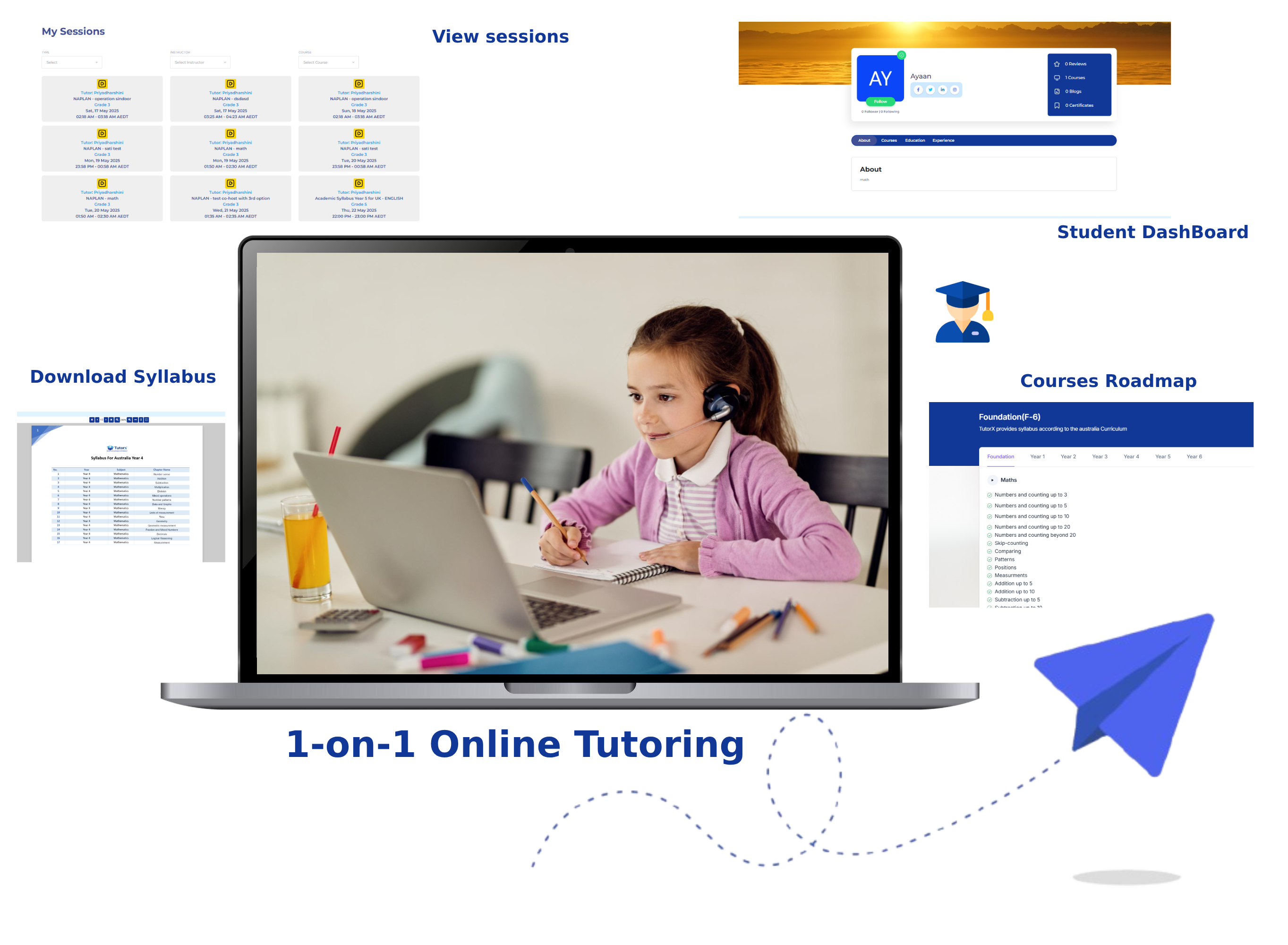Book a free trial session and start your personalized learning journey with our expert tutors.
Fill out the form below and one of our experts will contact you shortly.
Everything You Need, All in One Place
At The TutorX, we believe learning should be clear, focused, and at your fingertips. That’s why we’ve built a smart and user-friendly dashboard to empower every student on their academic journey. From live sessions and homework to performance tracking and resources—everything is seamlessly integrated to help you stay ahead with confidence.

Secondary education in Canada typically spans Grades 7 through 12, accommodating students aged approximately 12 to 18. While education is governed by individual provinces and territories, there is a general structure that includes middle school (Grades 7–8) and high school (Grades 9–12). The curriculum emphasizes the development of critical thinking, problem-solving, and independent learning skills, preparing students for post-secondary education, vocational training, or entry into the workforce.
In middle school, students build upon foundational knowledge acquired in primary education, with increased exposure to specialized subjects and elective courses. High school introduces a credit-based system, where students must accumulate a specific number of credits across various subject areas to graduate. For instance, in Ontario, students are required to earn 30 credits, complete 40 hours of community service, and pass the Ontario Secondary School Literacy Test (OSSLT) to obtain the Ontario Secondary School Diploma (OSSD).
Grade 7 introduces more specialized subjects. Students take English Language Arts, Mathematics (with an introduction to algebra), Science (covering ecosystems, mixtures, and forces), Social Studies (often centered around history or geography of Canada), Health & Physical Education, and electives such as Music or French as a Second Language (FSL).
In Grade 8, students deepen their understanding of core subjects. English focuses on analytical reading and structured writing. Math expands into geometry and linear equations. Science explores cells, fluids, and light. Social Studies may explore global or historical topics. Students may begin career education modules or explore digital literacy.
Grade 9 marks the start of high school in many provinces. Core subjects become credit-based. Math includes linear relations and polynomials. Science divides into key disciplines: biology (cells and systems), chemistry (atoms and elements), physics (electricity), and earth sciences. English focuses on literature and writing skills. Career Studies or Civics may be introduced.
Students begin choosing academic vs. applied tracks. Math might split into Foundations or Principles of Mathematics. Science continues to cover key strands with growing complexity—biology (genetics), chemistry (chemical reactions), physics (motion), and earth science. English emphasizes text analysis and composition. Students may add electives like Business, Arts, or Technology Education.
In addition, students usually choose a set of optional subjects based on their interests and future aspirations.

Grade 11 offers subject specialization aligned with future goals. English courses vary by stream. Math splits into Functions or Workplace Math. Sciences include distinct courses: Biology (e.g., cells and metabolism), Chemistry (molecular structures), Physics (kinematics and dynamics), and Environmental Science. Social Sciences, Technology, or Language electives grow in variety.
In Grade 12, students complete graduation requirements and prepare for post-secondary pathways. English (e.g., English Studies, Literary Studies) is required. Math may include Calculus, Advanced Functions, or Math for College. Students pursue advanced science courses in Biology, Chemistry, or Physics. Specialized subjects like Law, Economics, Computer Science, or Health Science may be available depending on the province and student goals.
Administrator

Lorem Ipsum is simply dummy text of the printing and typesetting industry. Lorem Ipsum has been the industry's standard dummy text ever since the 1500s, when an unknown printer took a galley of type and scrambled it to make a type specimen book.
Lorem Ipsum is simply dummy text of the printing and typesetting industry. Lorem Ipsum has been the industry's standard dummy text ever since the 1500s, when an unknown printer took a galley of type and scrambled it to make a type specimen book. It has survived not only five centuries, but also the leap into electronic typesetting, remaining essentially unchanged. It was popularised in the 1960s with the release of Letraset sheets containing Lorem Ipsum passages, and more recently with desktop publishing software like Aldus PageMaker including versions of Lorem Ipsum.
Reach out to TutorX your questions spark the path to smarter learning
